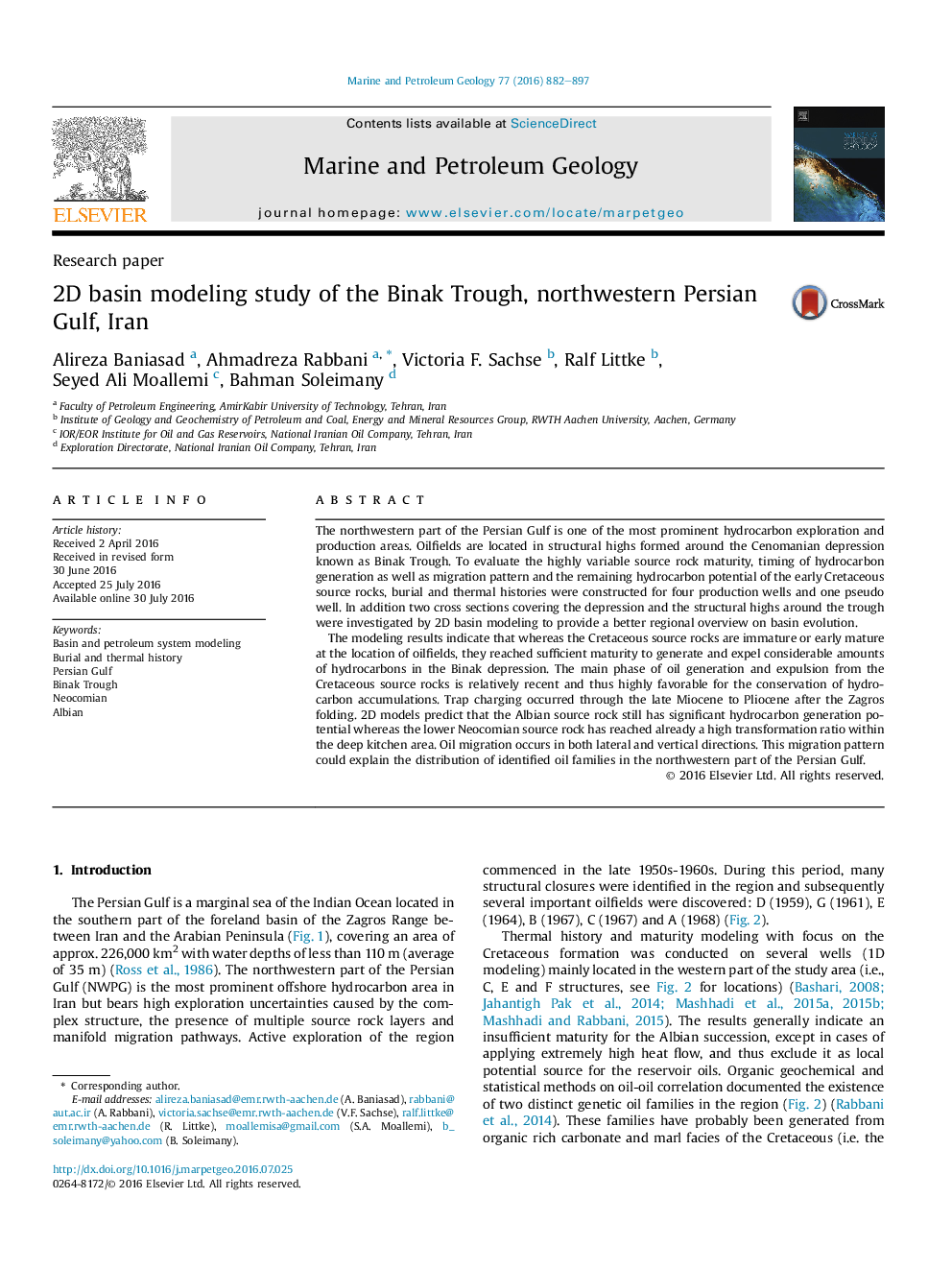| کد مقاله | کد نشریه | سال انتشار | مقاله انگلیسی | نسخه تمام متن |
|---|---|---|---|---|
| 6434632 | 1637150 | 2016 | 16 صفحه PDF | دانلود رایگان |

- The Cenomanian Binak depression is the main hydrocarbon generation kitchen in the northwestern part of the Persian Gulf.
- In the area hydrocarbon generation is predominantly controlled by burial depths rather than the heat flow variations.
- Recent Zagros folding has prominent influence on hydrocarbon generation, migration and accumulation in the study area.
The northwestern part of the Persian Gulf is one of the most prominent hydrocarbon exploration and production areas. Oilfields are located in structural highs formed around the Cenomanian depression known as Binak Trough. To evaluate the highly variable source rock maturity, timing of hydrocarbon generation as well as migration pattern and the remaining hydrocarbon potential of the early Cretaceous source rocks, burial and thermal histories were constructed for four production wells and one pseudo well. In addition two cross sections covering the depression and the structural highs around the trough were investigated by 2D basin modeling to provide a better regional overview on basin evolution.The modeling results indicate that whereas the Cretaceous source rocks are immature or early mature at the location of oilfields, they reached sufficient maturity to generate and expel considerable amounts of hydrocarbons in the Binak depression. The main phase of oil generation and expulsion from the Cretaceous source rocks is relatively recent and thus highly favorable for the conservation of hydrocarbon accumulations. Trap charging occurred through the late Miocene to Pliocene after the Zagros folding. 2D models predict that the Albian source rock still has significant hydrocarbon generation potential whereas the lower Neocomian source rock has reached already a high transformation ratio within the deep kitchen area. Oil migration occurs in both lateral and vertical directions. This migration pattern could explain the distribution of identified oil families in the northwestern part of the Persian Gulf.
Journal: Marine and Petroleum Geology - Volume 77, November 2016, Pages 882-897